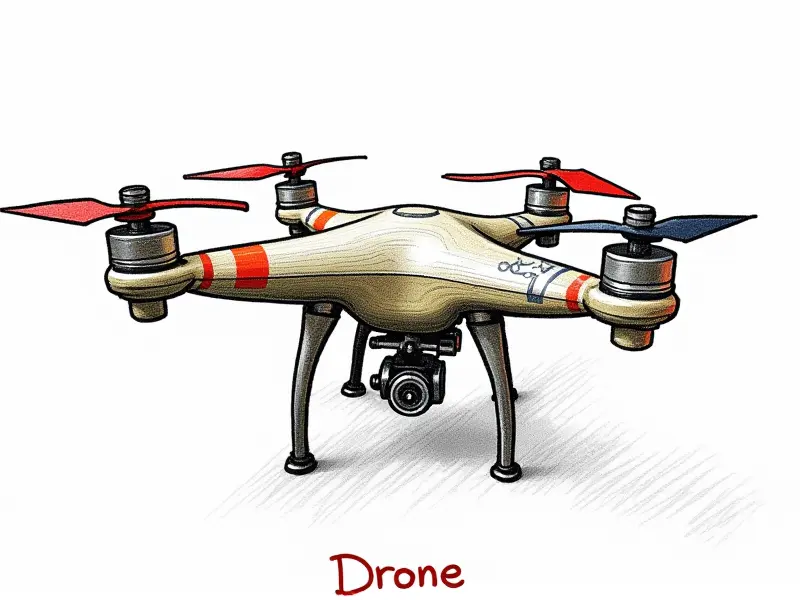RC airplane wing types?

Understanding RC Plane Wings
Radio-controlled (RC) airplanes come in a variety of shapes and sizes, each designed to meet specific flying conditions and aerodynamic requirements. One crucial aspect that significantly influences the performance and handling characteristics of an RC airplane is its wing type. This article delves into the intricacies of different RC plane wings, providing insights on how to choose the right one for your needs.
Top RC Airplane Wing Designs Explained
The design of an RC airplane's wing plays a pivotal role in determining its flight capabilities. Here are some of the most popular wing designs used in RC aviation:
- Foam Wings: These wings are made from lightweight foam and are ideal for beginner pilots due to their durability and ease of repair.
- Balsa Wood Wings: Known for their strength and flexibility, balsa wood wings offer excellent structural integrity and aerodynamic performance.
- Fiberglass Reinforced Plastic (FRP) Wings: FRP wings are highly durable and can withstand the rigors of high-speed flight. They are commonly used in competition models.
Choosing the Right RC Plane Wings
Selecting the appropriate wing type for your RC airplane involves considering several factors, such as flying conditions, desired performance characteristics, and personal preferences:
- Flying Conditions: Consider the weather and terrain where you plan to fly. For example, foam wings are great for beginners due to their resilience in rough handling.
- Performance Needs: Determine whether you need a wing that provides stability, maneuverability, or speed. Different wing designs cater to these varying requirements.
- Budget and Maintenance: Some materials are more expensive than others and may require more maintenance. Foam wings, for instance, are cost-effective and easy to repair.
Essential RC Wing Types for Beginners
If you're new to the world of RC airplanes, choosing a wing type that is forgiving and user-friendly is crucial:
- Foam Wings: Perfect for beginners due to their durability and ease of repair.
- Balsa Wood Glider Wings: These wings offer excellent glide performance and are relatively easy to construct, making them a great choice for learning basic aerodynamics.
Key Differences in RC Airplane Wings
Different wing types exhibit unique characteristics that affect the overall flying experience. Here’s a closer look at some key differences:
- Foam vs Balsa Wood: Foam wings are lighter and more durable, while balsa wood wings provide better aerodynamic performance.
- Symmetrical vs Cambered Wings: Symmetrical wings offer equal performance in all flight attitudes, whereas cambered wings are optimized for lift at lower angles of attack.
Best Wings for Your RC Airplane Model
The optimal wing type depends on the specific model and intended use. For example:
- Turbocharged Models: High-performance wings such as FRP or carbon fiber are recommended to handle the increased speed and power.
- Glider Models: Balsa wood glider wings provide excellent glide performance, making them ideal for this type of RC airplane.
How Wing Type Affects RC Performance
The choice of wing type has a direct impact on the overall performance of your RC airplane. Here’s how different wing types influence flight characteristics:
- Lift and Drag: Cambered wings generate more lift but also create more drag, while symmetrical wings offer balanced performance.
- Cruise Speed: Wings with a higher aspect ratio (length-to-width) are better for long-distance flights due to reduced induced drag.
Must-Know RC Airplane Wing Features
Understanding the features of different wing types can help you make an informed decision. Some important aspects to consider include:
- Fuselage Integration: How well the wing integrates with the fuselage affects stability and performance.
- Dihedral Angle: The dihedral angle influences the airplane's lateral stability during flight.
Exploring RC Airplane Wing Shapes
The shape of an RC plane wing can vary widely, each offering distinct advantages. Common shapes include:
- Straight Wings: Simple and straightforward design that provides good stability.
- Tapered Wings: Tapering the wings from root to tip reduces weight and drag, enhancing performance.
Different RC Airplane Wing Configurations
The configuration of an RC plane wing can significantly affect its aerodynamics. Some common configurations include:
- High-Wing Configuration: Provides excellent visibility and stability, making it ideal for trainers.
- Mid-Wing Configuration: Offers a balance between maneuverability and stability.
Mastering RC Aircraft Wing Selection
Selecting the right wing type is crucial to achieving optimal performance in your RC airplane. Here are some tips for making an informed choice:
- Understand Your Needs: Determine what you want from your RC plane before choosing a wing type.
- Research and Compare: Investigate different wing types to find the one that best suits your requirements.
Conclusion
The choice of wing type for your RC airplane is a critical decision that can greatly influence its performance, stability, and handling characteristics. By understanding the various options available and considering factors such as flying conditions, performance needs, and personal preferences, you can select the ideal wing type to enhance your RC flying experience.

